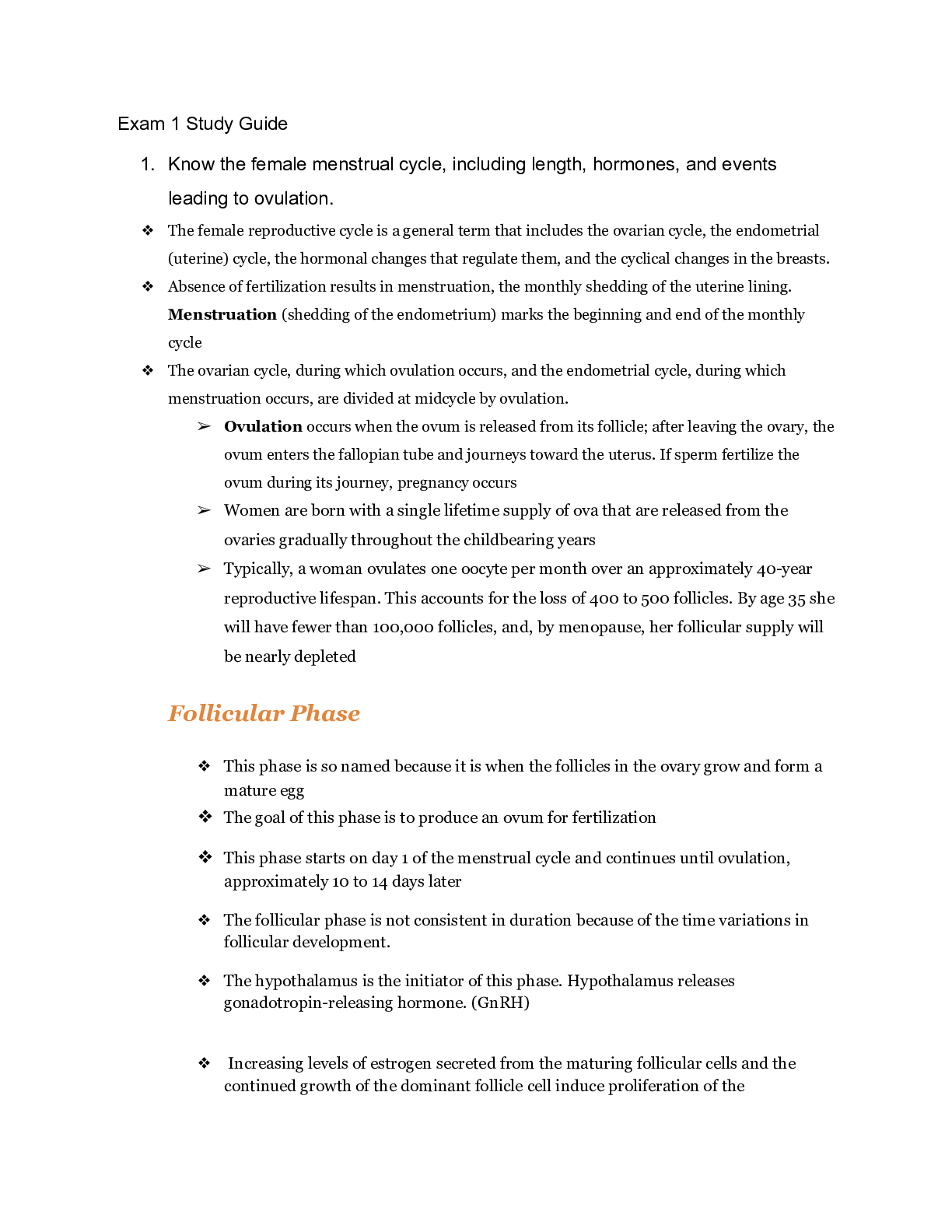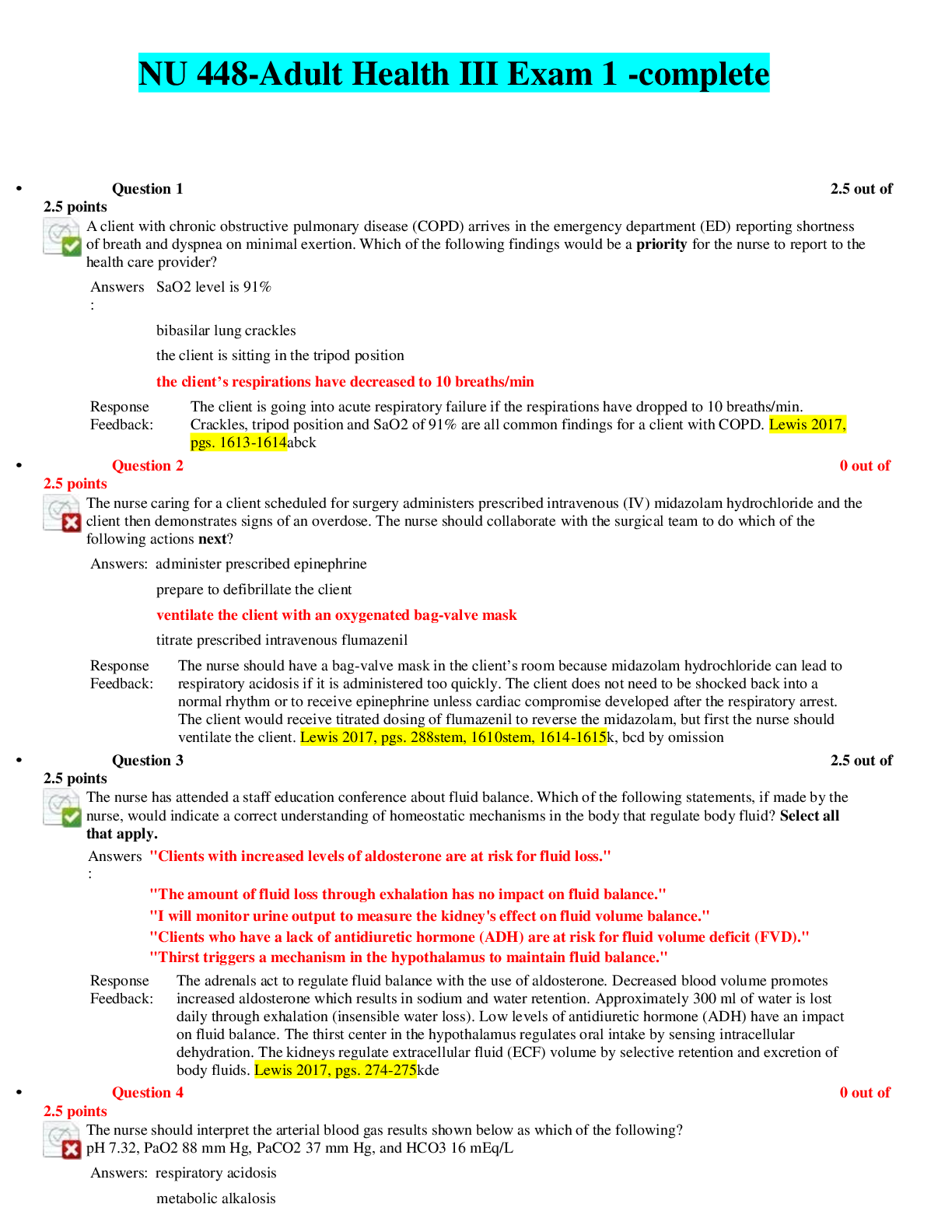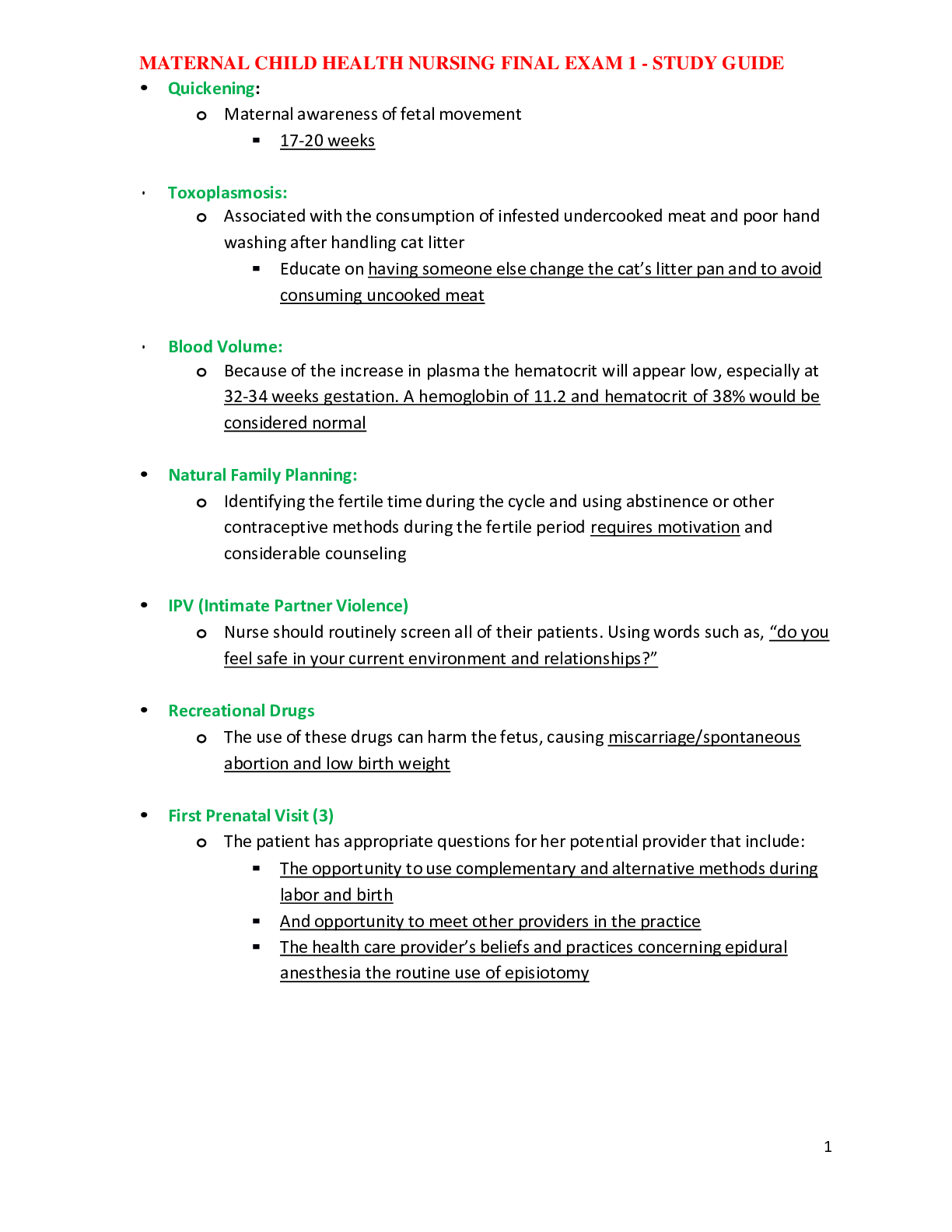*NURSING > STUDY GUIDE > NURS 340 OB Study Guide Exam 1 - Maternal & Child Nursing Textbook (All)
NURS 340 OB Study Guide Exam 1 - Maternal & Child Nursing Textbook
Document Content and Description Below
Chapter 1: Contemporary Maternal, Newborn, and Child Health Nursing ü PP. 3-4 and Table 1-1 on p. 4. What is Family-Centered Care? (2 questions) Know Concepts of family centered care: Goal to inclu... ded family, friend, spouse and others keep them updated with patient permission. The family is acknowledged as the constant in the child’s life and a partner in the child’s health care. The family, child, and health professionals work together in the best interest of the child and the family. Over time, the child assumes a partnership role in his or her health care. Health professionals listen to and respect the skills and expertise that the family brings to the relationship. Trust is a fundamental element of the relationship between the family, child, and health professionals. Communication occurs in an open, unbiased manner and is ongoing. Families, children, and health professionals make decisions regarding the child’s care in a collaborative manner in all healthcare settings and for all types of health care needed (e.g., health promotion, health maintenance, acute care, chronic condition care, and endof-life care). Negotiation may be involved in collaborative decision making. The child is supported to learn about and participate in his or her health care and decision making. The adolescent is supported to assume a partnership role in his or her health care and in the transition to adult health care. The racial, ethnic, cultural, and socioeconomic background of the family and child, as well as family traditions, are honored. Health professionals work to integrate these values and the preferences of the family and child when planning and providing health care. Family-to-family and peer support are encouraged. Healthcare settings develop policies, procedures, practices, and systems that are family friendly and family centered; they support the choices the family and child will make regarding care. Health information for children and families is available and provided to match the range of cultural and linguistic diversity in the community as well as the health literacy levels. ü P. 8 Section on Pediatric mortality: What are the common causes of unintentional injuries The most common cause of death for U.S. children between 1 and 19 years of age is injury. Congenital malformations, cancer, and diseases of the heart are the most common medical causes of death. The question was an EXCEPT question about unintentional injuries, the answer is cancer Although unintentional injury is the leading cause of death, it is disturbing that intentional, unforseen or preventable injury (homicide and suicide) is a major cause of death for the nation’s children. The major causes of unintentional injury mortality in childhood include motor vehicle accidents (passengers and pedestrians), drowning, fires and burns, suffocation, and poisoning. Table 1–3 illustrates the leading causes of injury deaths by age group. Many injury prevention programs have been implemented by state health departments, healthcare facilities, and national organizations to reduce the number of children who die unnecessarily. Chapter 2: Culture and the Family ü P. 19 Family Assessment Knapp says know how to connect information related to barriers: Does the patient know how to read or write. Is the patient blind or deaf. What the patients needs in their family? What type of environment is the person exposed to? Will the patient breastfeed or not. Pt roles values, culture, beliefs and spirituality. Respect patient family choices. What is involved? Basic information should include the following: Name, age, sex, and family relationship of all people residing in the household Family type, structure, roles, and values Cultural associations, including cultural norms and customs related to childbearing, child rearing, and infant feeding Religious affiliations, including specific religious beliefs and practices related to childbearing Support network, including extended family, friends, and religious and community associations Communication patterns, including language barriers I think it was a select all ¾, and the one I didn’t choose was the kind of house they live in ü P. 27 The Nursing Diagnosis: Which one would be appropriate for a families with other cultures? Knapp says: read the question and pick the diagnosis that fits the patient Health Management, Family, Ineffective, related to mistrust of healthcare personnel Fear related to separation from support system in stressful situation such as hospitalization Spiritual Distress related to discrepancy between spiritual beliefs and prescribed treatment Family Processes, Interrupted, related to a shift in family roles due to illness It was related to an Asian family, which diagnosis would you choose, I chose Spiritual Distress, because it was the only one that had a related to that made sense, the other choice I was thinking about was FAMILY Process related to grandparents out of state, I didn’t choose it because there was nothing about an illness ü PP. 28-30 Types of Complementary and Alternative Therapies (select all) Just know the types of therapies. Know touch, know massage. Naturopathy Traditional Chinese Medicine (TCM) Mind-Based Therapies Chiropractic Herbal Therapies Therapeutic Touch Select all ¾, the one you don’t choose is TIME orientation Chapter 3: Genetic and Genomic Influences in Maternal, Newborn, and Child Health 8 Questions related to this chapter ü P. 38-39 Autosomal Dominant (review the Figures on p. 39) Know what autosomal dominant looks like. The figure 3-2 is shown, and you just answer autosomal dominant ü P. 39 Know the Clinical Tip section (1 stone on Left side under figure 3-2) What are some characteristics of autosomal dominant? Know that. Question about further education, choose the one where it said the boy had a higher chance than the girl of being autosomal dominant ü P. 42 Table 3-2 SATA Know common birth defects that are multifactorial. Do not need to go into details. Just know them. Select All-just know the names, nothing else ü P. 43 Review the top 2 paragraphs on left side, understand what a nurse does when a positive screen comes back. Starts on page 42. Listen to things she may tell you upon admission. If the screening comes back positive the patient will receive further testing the nurse should be help the patient plan and make appointments. Related to genetic testing. Sensitive tests, however, will sometimes be positive in individuals who do not have the disorder; that is, false-positive tests do occur. For that reason, a positive screening test must be followed by a diagnostic test. Newborn screening provides an excellent example. Most newborns in developed countries are screened for a variety of genetic diseases, most rare. Recent advances in laboratory technology have allowed greatly expanded newborn screening with little increase in cost, and newborns in some states are tested for more than 40 rare conditions. Each positive screening test must be followed by a diagnostic test. Fortunately, most positive screening tests are falsely positive, but the cost of follow-up testing is significant both in terms of parental anxiety and financial burden (DeLuca, Zanni, Bonhomme, et al., 2013). Diagnostic tests are performed to confirm a diagnosis when a child is suspected of having a specific disorder based on clinical presentation or screening test results. [Show More]
Last updated: 1 year ago
Preview 1 out of 17 pages
Instant download
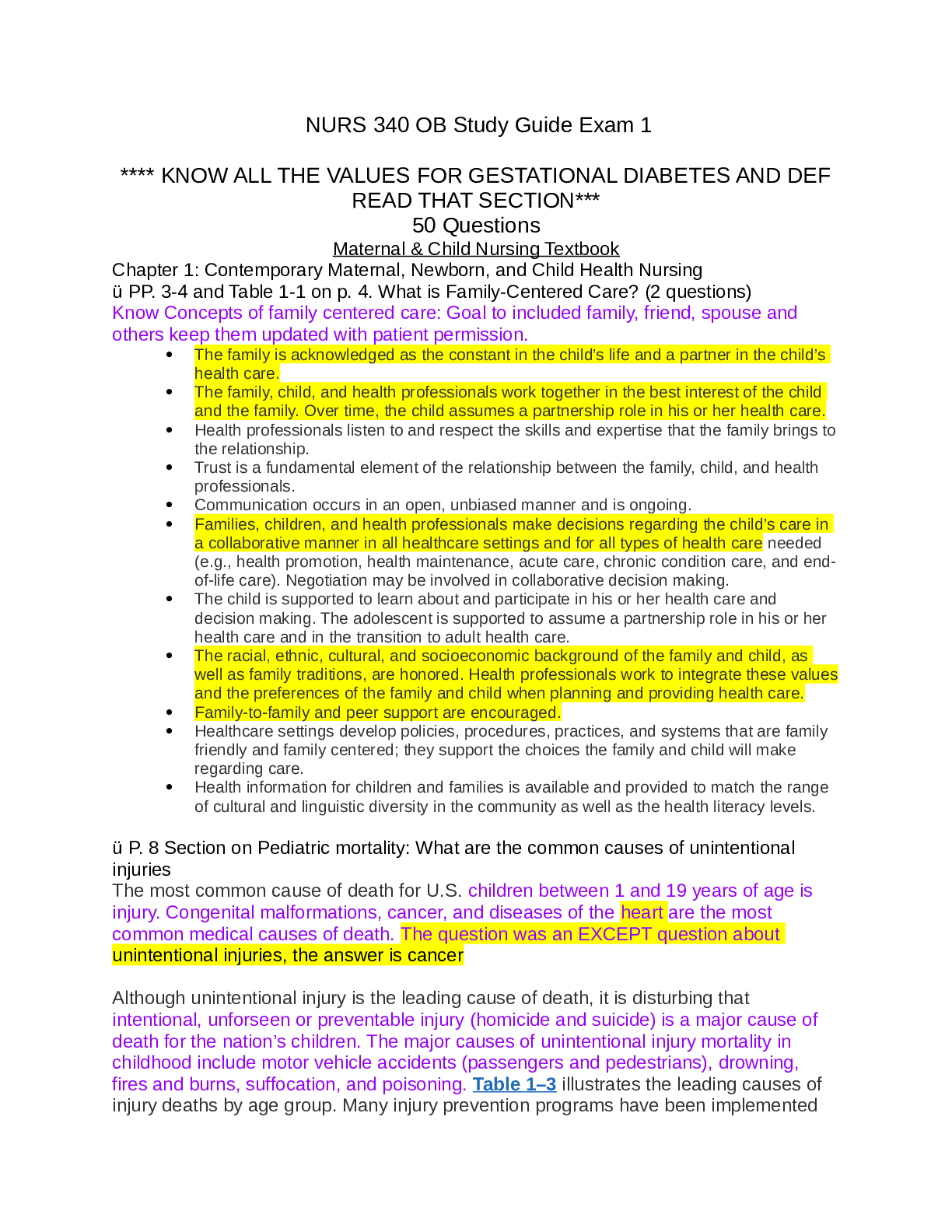
Buy this document to get the full access instantly
Instant Download Access after purchase
Add to cartInstant download
Reviews( 0 )
Document information
Connected school, study & course
About the document
Uploaded On
May 09, 2021
Number of pages
17
Written in
Additional information
This document has been written for:
Uploaded
May 09, 2021
Downloads
0
Views
39

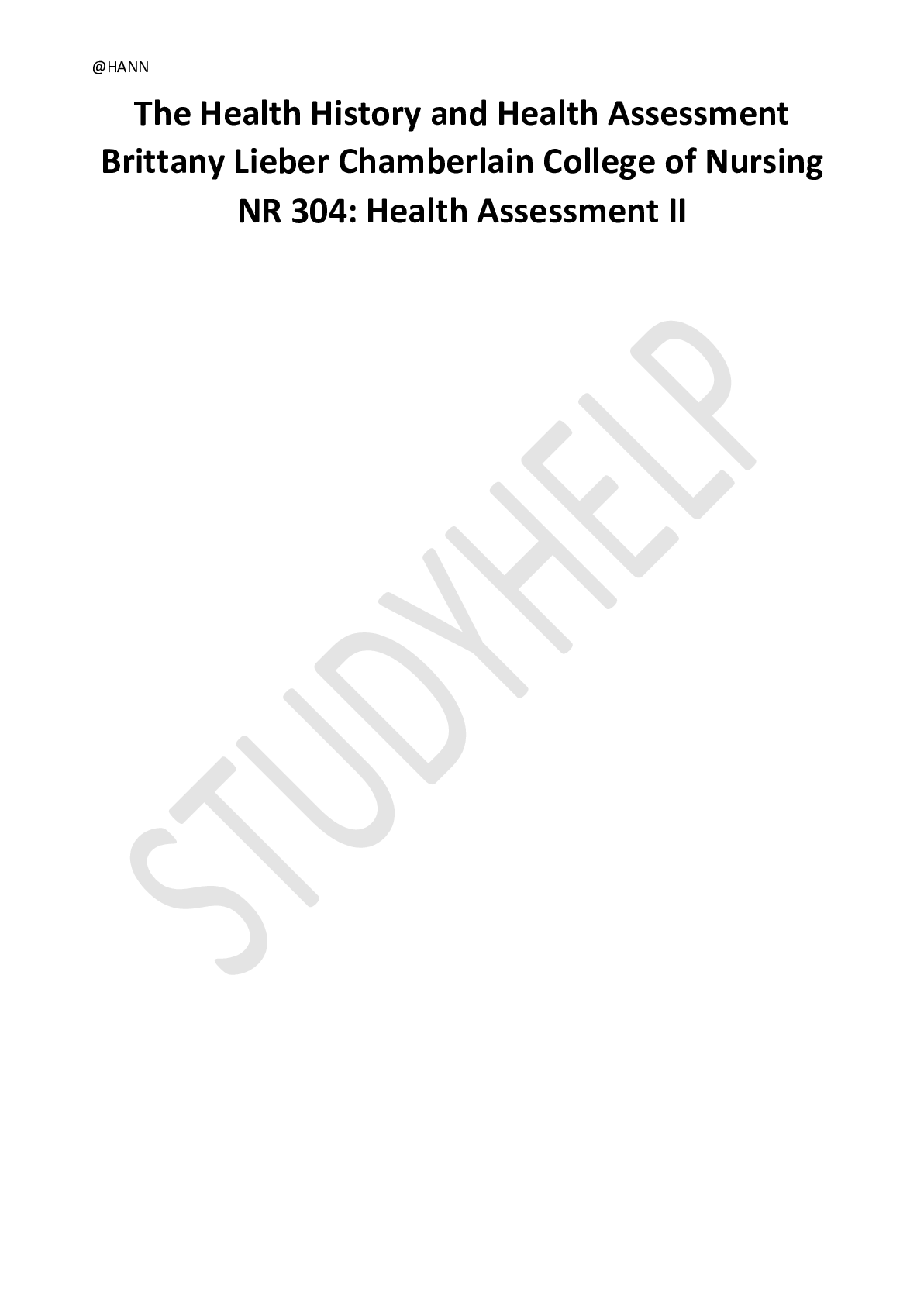


.png)
.png)
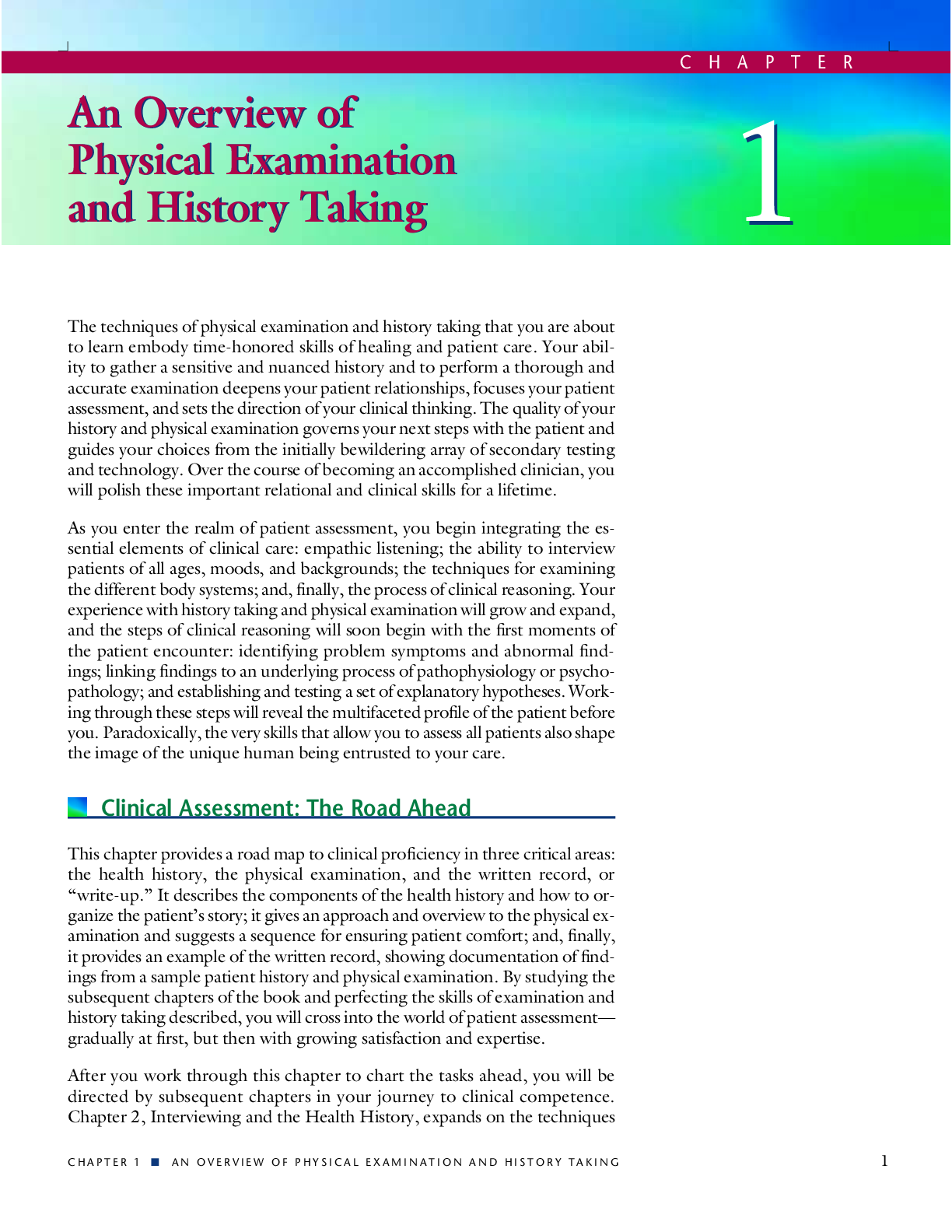


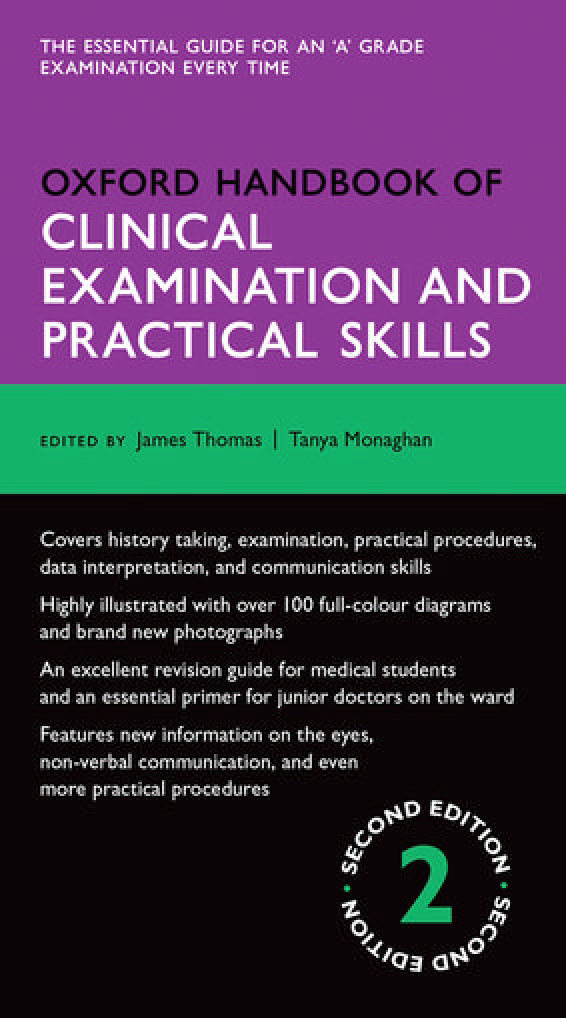
.png)
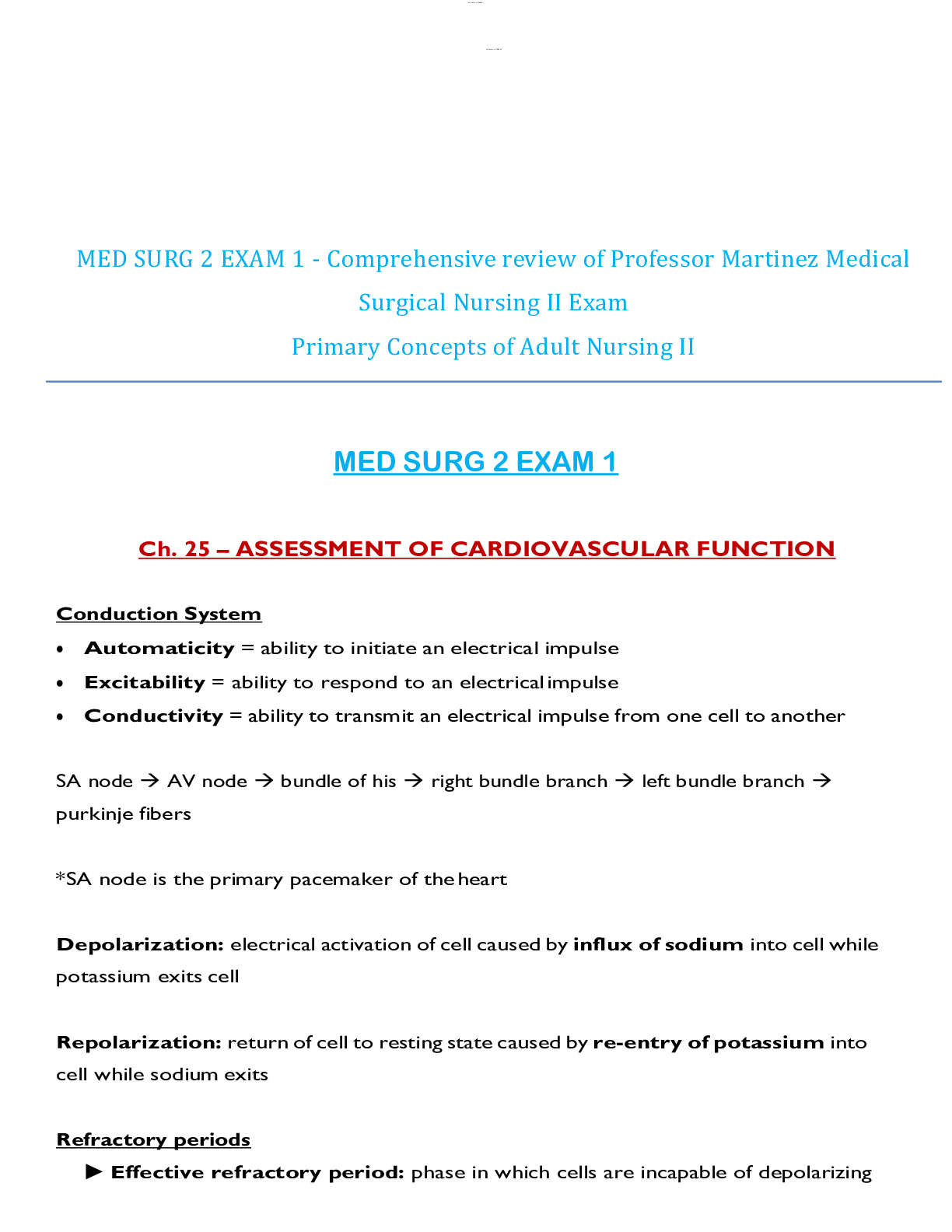

, Latest Questions and Answers with Explanations for Revision, All Correct Latest Review, (Latest 2021) Correct Study Guide, Download to Score A.png)
 Questions and Answers (latest Update), All Correct, Download to Score A.png)
, All Correct, Download to Score A.png)


